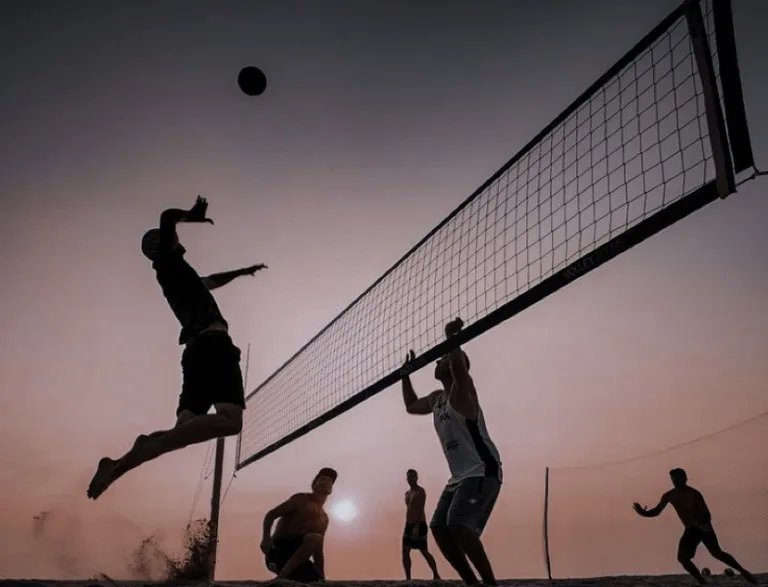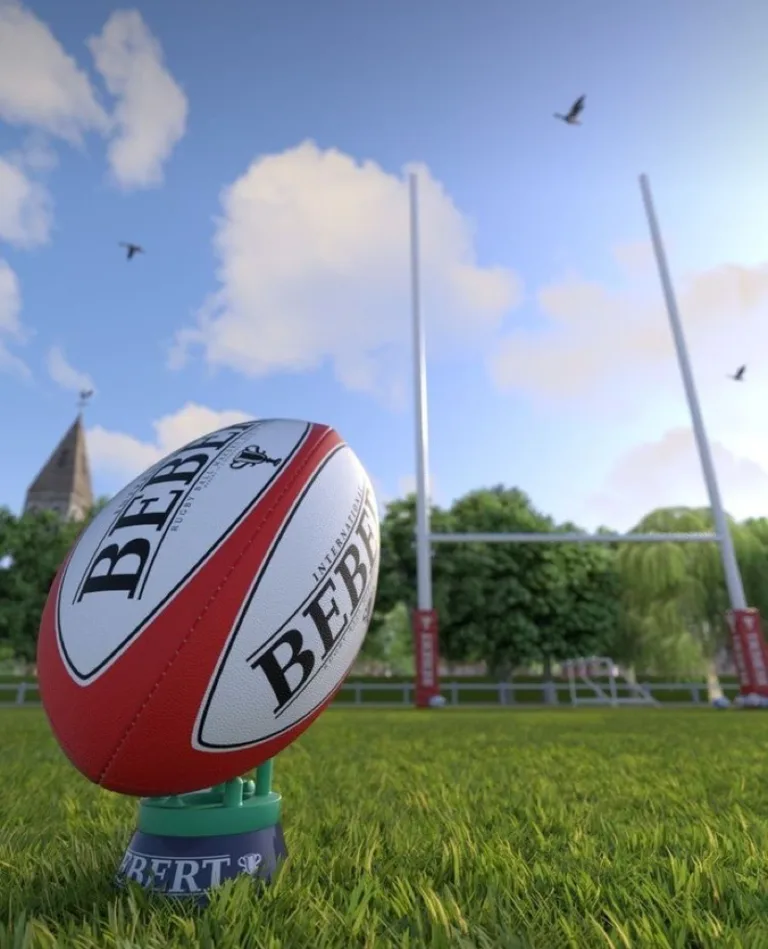Here is a list of top 10 most popular sports in the world:
1.FOOTBALL/SOCCER
Fans: 3.5billion
Football, known as soccer, is widely regarded as the most popular sport in the world. Its global appeal and extensive reach make it a unifying force across diverse cultures and societies.
Global Reach and Participation
- Wide Participation: Football is played by millions of people of all ages around the world. It is estimated that over 250 million people actively play football in more than 200 countries.
- International Competitions: Major international tournaments like the FIFA World Cup, UEFA European Championship, Copa América, and the African Cup of Nations draw massive global audiences, further increasing the sport’s popularity.
Cultural and Social Impact
- Cultural Significance: Football holds a significant place in the cultural and social life of many countries. It fosters community spirit, national pride, and social cohesion.
- Iconic Players: Legendary footballers like Pelé, Diego Maradona, Lionel Messi, Cristiano Ronaldo, and many others have become global icons, inspiring millions of fans and aspiring players.
Accessibility and Simplicity
- Simple Rules: Football’s basic rules are easy to understand, making it accessible to people of all ages and backgrounds. The simplicity of the game allows it to be played almost anywhere, from professional stadiums to makeshift fields.
- Minimal Equipment: The sport requires minimal equipment—primarily a ball—making it easy for people to play regardless of their economic circumstances.
Commercial and Media Influence
- Television and Broadcasting: Football matches are broadcast to billions of viewers worldwide. Major leagues like the English Premier League, La Liga, Serie A, and the Bundesliga have extensive international followings.
- Sponsorship and Advertising: Football attracts substantial investment from sponsors and advertisers. Major brands invest heavily in football, recognizing its unparalleled ability to reach a broad audience.
- Digital Media: Social media platforms and digital streaming services have expanded football’s reach, allowing fans to follow their favorite teams and players in real-time from anywhere in the world.
Organizational Structure
- Global Governing Bodies: Organizations like FIFA (Fédération Internationale de Football Association) and regional confederations (UEFA, CONMEBOL, CAF, etc.) play crucial roles in promoting and organizing the sport globally.
- Club Football: Professional clubs around the world, especially in Europe and South America, contribute significantly to football’s popularity. Iconic clubs like FC Barcelona, Real Madrid, Manchester United, and Bayern Munich have huge global fan bases.
Major Tournaments and Events
- FIFA World Cup: The World Cup is the most-watched sporting event globally, drawing billions of viewers. It showcases the world’s best teams and players, creating memorable moments and intense national pride.
- UEFA Champions League: This premier club competition in Europe features top teams from across the continent, attracting significant global viewership and showcasing high-quality football.
Youth Development and Grassroots Programs
- Youth Academies: Many professional clubs and national associations invest in youth development programs, nurturing the next generation of football talent.
- Grassroots Initiatives: Various grassroots initiatives aim to promote football at the community level, ensuring that young people have opportunities to play and develop their skills.

2.CRICKET
Fans: 2.5 Billion
Cricket is one of the most popular sports in the world, particularly in countries like India, Pakistan, Australia, England, and South Africa. Its widespread appeal is evident through its massive fan base, the significant cultural impact it has in many countries, and the extensive media coverage it receives.
Global Reach and Popularity
- Regional Popularity: Cricket is immensely popular in South Asia, including India, Pakistan, Sri Lanka, and Bangladesh. India alone, with its population of over 1.4 billion people, contributes significantly to the sport’s global fan base.
- International Competitions: Major international tournaments such as the ICC Cricket World Cup, ICC T20 World Cup, and ICC Champions Trophy draw huge global audiences. These tournaments feature teams from various countries, showcasing the best talent in the sport.
Cultural Significance
- National Identity: In countries like India and Pakistan, cricket is more than just a sport; it’s a part of the national identity. Matches between these countries are watched by millions and generate intense national pride and emotion.
- Cultural Celebrations: Cricket matches, especially major tournaments, are often treated as cultural events, with fans celebrating by hosting viewing parties, dressing in team colors, and engaging in community activities.
Accessibility and Engagement
- Grassroots Participation: Cricket is played at all levels, from grassroots and school competitions to professional leagues. This widespread participation helps maintain and grow its popularity.
- Simple Equipment: While professional cricket requires specific equipment and facilities, informal games can be played with minimal equipment, making the sport accessible to a broader audience.
Commercial and Media Influence
- Television and Broadcasting: Cricket matches are widely broadcast, with major tournaments and league games attracting millions of viewers. Countries like India have dedicated sports channels and significant broadcast deals that bring cricket to a vast audience.
- Sponsorship and Advertising: Cricket attracts substantial investment from sponsors and advertisers, particularly in countries where the sport is extremely popular. Major brands invest heavily in cricket to capitalize on its broad viewership.
- Digital Media: Social media platforms and digital streaming services have expanded cricket’s reach, allowing fans to follow live updates, watch highlights, and engage with players and teams online.
Iconic Players and Teams
- Legendary Cricketers: Cricket has produced numerous legendary players who have become household names, such as Sachin Tendulkar, Virat Kohli, Sir Donald Bradman, Brian Lara, and Shane Warne. These players have inspired millions of fans worldwide.
- Historic Teams: National teams like the Indian cricket team, Australian cricket team, and England cricket team have rich histories and have cultivated loyal fan bases over decades.
Major Tournaments and Events
- ICC Cricket World Cup: The World Cup is one of the most prestigious tournaments in cricket, drawing large viewership and significant media attention. It brings together the best national teams for a highly competitive and widely followed event.
- T20 Leagues: Domestic T20 leagues, such as the Indian Premier League (IPL), Big Bash League (BBL), and Caribbean Premier League (CPL), have become extremely popular. The IPL, in particular, attracts top talent from around the world and has a massive global following.
Youth Development and Grassroots Programs
- Youth Academies: Many countries invest in youth cricket programs and academies to develop future talent. These programs provide training and opportunities for young players to hone their skills.
- Community Engagement: Grassroots initiatives promote cricket at the community level, ensuring that the sport is accessible to everyone and that young people have opportunities to play and develop their skills.

3.HOCKEY
Fans: 2 billion
Hockey, particularly ice hockey and field hockey, is one of the most popular sports in the world. Both versions of the sport have significant global followings, extensive participation, and considerable cultural impact in different regions.
Ice Hockey
Global Reach and Popularity
- Regional Popularity: Ice hockey is extremely popular in countries with colder climates, such as Canada, the United States, Russia, Sweden, Finland, and the Czech Republic. Canada, in particular, considers ice hockey a part of its national identity.
- International Competitions: Major international tournaments like the Winter Olympics, IIHF World Championships, and the World Junior Championships draw large audiences and feature top talent from around the world.
Cultural Significance
- National Identity: In Canada and other countries, ice hockey is more than just a sport; it’s a significant part of the cultural fabric. The sport is associated with national pride and heritage.
- Community and Tradition: Ice hockey fosters a sense of community, with many towns and cities rallying around local teams. It also has a rich tradition and history that is celebrated by fans and players alike.
Accessibility and Engagement
- Youth and Amateur Participation: Ice hockey is played at various levels, from youth leagues to professional leagues. Many countries have extensive youth programs that nurture talent from a young age.
- Professional Leagues: The National Hockey League (NHL) is the premier professional ice hockey league, attracting top players from around the world and drawing significant viewership and fan engagement.
Commercial and Media Influence
- Broadcasting: Ice hockey games are widely broadcast, with the NHL and international tournaments drawing substantial viewership. The sport’s fast pace and physicality make it exciting to watch.
- Sponsorship and Advertising: Ice hockey attracts significant sponsorship and advertising revenue. Major brands invest in the sport, recognizing its passionate fan base.
Iconic Players and Teams
- Legendary Players: Ice hockey has produced many legendary players, such as Wayne Gretzky, Mario Lemieux, Bobby Orr, and Alexander Ovechkin, who have become icons of the sport.
- Historic Teams: Teams like the Montreal Canadiens, Toronto Maple Leafs, and Detroit Red Wings have rich histories and large, loyal fan bases.
Field Hockey
Global Reach and Popularity
- Wide Participation: Field hockey is played by millions of people in over 100 countries. It is particularly popular in Europe, Asia, Africa, and Australia.
- Major Competitions: The Hockey World Cup, FIH Pro League, and the Olympic Games are major international tournaments that attract top teams and significant viewership.
Cultural Significance
- National Pride: Field hockey is a source of national pride in countries like India, Pakistan, the Netherlands, Australia, and Germany. Success in international tournaments is celebrated and revered.
- Community Engagement: Field hockey fosters community involvement, with many local clubs and schools promoting the sport and engaging young athletes.
Accessibility and Engagement
- Youth and Grassroots Programs: Many countries have robust youth and grassroots programs that introduce children to the sport and develop their skills.
- School and College Level: Field hockey is commonly played in schools and colleges, promoting widespread participation and interest.
Commercial and Media Influence
- Television and Streaming: Major field hockey tournaments are broadcast globally, and digital platforms provide fans with access to live matches, highlights, and updates.
- Sponsorship: Field hockey attracts sponsorship from companies looking to tap into its dedicated fan base. Major tournaments and leagues benefit from commercial support.
Iconic Players and Teams
- Legendary Players: Field hockey has produced many iconic players, such as Dhyan Chand from India, Ric Charlesworth from Australia, and Teun de Nooijer from the Netherlands.
- Successful Teams: Teams like the Indian national team, the Dutch national team, and the Australian national team have achieved great success and have large followings.

4.TENNIS
Fans:1 billion
Tennis is one of the most popular sports in the world, with a significant global following, widespread participation, and a substantial cultural impact.
Global Reach and Participation
- International Popularity: Tennis is played and followed by millions of people across the globe. The sport has a strong presence in countries like the United States, Australia, the United Kingdom, France, Spain, and many more.
- Widespread Participation: Tennis is accessible at various levels, from local clubs to professional tournaments. It is played by individuals of all ages, making it a lifelong sport for many enthusiasts.
Major Tournaments and Events
- Grand Slam Tournaments: The four Grand Slam tournaments—Wimbledon, the US Open, the French Open, and the Australian Open—are among the most prestigious and widely viewed events in tennis. These tournaments attract the top players and generate significant global media coverage.
- ATP and WTA Tours: The Association of Tennis Professionals (ATP) and the Women’s Tennis Association (WTA) organize professional tours that feature numerous tournaments throughout the year, providing continuous engagement for fans.
Iconic Players and Matches
- Legendary Players: Tennis has produced numerous iconic players who have achieved global fame, such as Roger Federer, Rafael Nadal, Serena Williams, Novak Djokovic, and Martina Navratilova. Their achievements and personalities have greatly contributed to the sport’s popularity.
- Memorable Matches: Historic matches and rivalries, such as those between Federer and Nadal, or Borg and McEnroe, have captivated audiences and added to the sport’s rich history.
Cultural Significance
- High-Profile Sport: Tennis is often associated with prestige and high society, especially with events like Wimbledon, which has a long tradition and is attended by celebrities and royalty.
- Global Fan Base: The sport transcends national boundaries and unites fans worldwide. Major tournaments are watched by millions of people, creating a shared global experience.
Accessibility and Infrastructure
- Club and School Programs: Many countries have extensive networks of tennis clubs and school programs that promote the sport from a young age. This widespread infrastructure supports player development and participation.
- Amateur and Recreational Play: Tennis can be played at various levels, from competitive leagues to casual matches among friends. Public courts and community programs make it accessible to a wide audience.
Commercial and Media Influence
- Television and Broadcasting: Major tennis tournaments are broadcast globally, attracting large audiences and significant media attention. The sport’s appeal to both live and television audiences is a key factor in its popularity.
- Sponsorship and Advertising: Tennis attracts substantial sponsorship from major brands, which recognize the sport’s broad appeal and affluent fan base. Players often secure lucrative endorsement deals, further increasing the sport’s visibility.
- Digital Media: Social media platforms and streaming services have expanded tennis’s reach, allowing fans to follow matches, interact with players, and stay updated on the latest news and events.
Health and Fitness Benefits
- Physical Fitness: Tennis is an excellent form of exercise, providing cardiovascular, muscular, and flexibility benefits. It is promoted as a healthy and active lifestyle choice.
- Mental Agility: The strategic nature of tennis, requiring quick thinking and tactical planning, also promotes mental sharpness and resilience.

5.VOLLEYBALL
Fans: 900 million
Global Reach and Participation
- Widespread Participation: Volleyball is played by millions of people in over 200 countries. The Fédération Internationale de Volleyball (FIVB) is the sport’s international governing body and has more member countries than any other sport’s governing body, including FIFA.
- School and College Programs: Volleyball is commonly played in schools and colleges around the world. It is part of physical education curricula and inter-school competitions, promoting early and widespread engagement with the sport.
Major Tournaments and Events
- Olympic Games: Volleyball has been an Olympic sport since 1964, and beach volleyball was added in 1996. These events draw large audiences and feature the best teams from around the world.
- World Championships and World Cup: The FIVB Volleyball World Championships and the FIVB Volleyball World Cup are major international tournaments that attract top national teams and significant global viewership.
- Professional Leagues: Professional volleyball leagues, such as the Italian Serie A1, Brazilian Superliga, and the Russian Super League, are highly competitive and draw large crowds.
Cultural Significance
- Beach Volleyball: Beach volleyball, with its relaxed, festive atmosphere, has a distinct cultural appeal, particularly in countries with popular beach destinations like Brazil, the United States, and Australia.
- Community and Recreation: Volleyball is often played recreationally at beaches, parks, and community centers, fostering a sense of community and enjoyment among players of all ages.
Accessibility and Engagement
- Simple Equipment: Volleyball requires minimal equipment—just a net and a ball—making it accessible to a wide audience. It can be played indoors or outdoors, on various surfaces, including sand and grass.
- Team Sport: Volleyball’s nature as a team sport encourages teamwork, communication, and camaraderie, making it appealing to many participants.
Commercial and Media Influence
- Broadcasting and Media Coverage: Major volleyball tournaments are broadcast globally, attracting large audiences. Events like the Olympic Games and World Championships receive extensive media coverage.
- Sponsorship and Advertising: Volleyball attracts significant sponsorship, particularly for high-profile events like the Olympic Games and World Championships. Brands recognize the sport’s broad appeal and invest in advertising and partnerships.
- Digital Media: Social media and online streaming platforms have expanded volleyball’s reach, allowing fans to follow matches, interact with players, and stay updated on the latest news and events.
Health and Fitness Benefits
- Physical Fitness: Volleyball is a highly physical sport that improves cardiovascular health, muscular strength, and agility. It is promoted as a healthy and active lifestyle choice.
- Mental Benefits: The strategic and fast-paced nature of volleyball requires quick thinking, coordination, and focus, contributing to mental sharpness and resilience.
Iconic Players and Teams
- Legendary Players: Volleyball has produced numerous iconic players who have achieved international fame, such as Karch Kiraly, Giba (Gilberto Amauri de Godoy Filho), Lang Ping, and Misty May-Treanor.
- Successful Teams: National teams from countries like Brazil, the United States, Russia, Italy, and China have achieved significant success and have large, dedicated fan bases.
Grassroots and Youth Development
- Youth Programs: Many countries have extensive youth volleyball programs that introduce children to the sport and develop their skills from a young age.
- Grassroots Initiatives: Grassroots initiatives promote volleyball at the community level, ensuring that the sport is accessible to everyone and that young people have opportunities to play and develop their skills.

6.TABLE TENNIS
Fans:850 million
Table tennis, also known as ping pong, is one of the most popular sports in the world. Its popularity stems from its accessibility, global reach, significant cultural impact, and the fact that it is played both recreationally and competitively.
Global Reach and Participation
- Widespread Participation: Table tennis is played by millions of people across the globe. It is particularly popular in countries like China, Japan, South Korea, Germany, and Sweden, but it has players and fans in almost every country.
- International Governing Body: The International Table Tennis Federation (ITTF) governs the sport globally and has member associations in over 220 countries and territories.
Major Tournaments and Events
- Olympic Games: Table tennis has been an Olympic sport since 1988. The Olympic competition draws the best players from around the world and garners significant international viewership.
- World Championships: The ITTF World Table Tennis Championships is one of the sport’s most prestigious events, featuring top players from various countries and attracting a global audience.
- ITTF World Tour: The ITTF World Tour includes a series of professional tournaments held annually, culminating in the World Tour Grand Finals, which features the world’s top players.
Cultural Significance
- National Pride: In countries like China, table tennis is more than just a sport; it is a source of national pride and cultural identity. Chinese players have historically dominated the sport, and their successes are celebrated nationally.
- Community Engagement: Table tennis is often played in community centers, schools, and recreational facilities, making it a part of everyday life for many people. It fosters social interaction and community spirit.
Accessibility and Engagement
- Easy to Learn: The basic rules of table tennis are simple, making it easy for beginners to pick up. This accessibility contributes to its widespread appeal.
- Minimal Equipment: Table tennis requires minimal equipment—a table, paddles, and a ball—which makes it accessible to a broad audience. It can be played in a variety of settings, including homes, schools, and clubs.
- Indoor and Outdoor Play: While traditionally an indoor sport, table tennis can also be played outdoors with appropriate equipment, further increasing its accessibility.
Commercial and Media Influence
- Broadcasting and Media Coverage: Major table tennis tournaments are broadcast internationally, attracting large audiences. The sport’s fast pace and exciting rallies make it engaging for viewers.
- Sponsorship and Advertising: Table tennis attracts sponsorship from major brands, recognizing its global reach and dedicated fan base. Events and players often have substantial commercial support.
- Digital Media: Social media and online streaming platforms have expanded the sport’s reach, allowing fans to follow matches, interact with players, and stay updated on the latest news and events.
Health and Fitness Benefits
- Physical Fitness: Table tennis is an excellent form of exercise, promoting cardiovascular health, agility, reflexes, and hand-eye coordination. It is a low-impact sport, making it suitable for people of all ages.
- Mental Benefits: The strategic and fast-paced nature of table tennis requires quick thinking, concentration, and mental agility, contributing to cognitive health.
Iconic Players and Teams
- Legendary Players: Table tennis has produced many iconic players, such as Jan-Ove Waldner from Sweden, Deng Yaping from China, and Ma Long from China. These players have achieved international fame and inspired many fans.
- Successful Teams: National teams from countries like China, Japan, Germany, and South Korea have achieved significant success and have large, dedicated fan bases.
Grassroots and Youth Development
- Youth Programs: Many countries have extensive youth table tennis programs that introduce children to the sport and develop their skills from a young age.
- Grassroots Initiatives: Grassroots initiatives promote table tennis at the community level, ensuring that the sport is accessible to everyone and that young people have opportunities to play and develop their skills.

7.BASKETBALL
Fans: 800 million
Basketball is undoubtedly one of the most popular sports in the world. Its widespread appeal, cultural impact, accessibility, and significant presence in both professional and recreational contexts contribute to its global popularity.
Global Reach and Participation
- Widespread Participation: Basketball is played by millions of people in countries around the world. It is particularly popular in the United States, Canada, China, the Philippines, Australia, and many European countries.
- International Governing Body: The International Basketball Federation (FIBA) oversees the sport globally and has 213 national basketball associations as members.
Major Tournaments and Events
- NBA: The National Basketball Association (NBA) in the United States is the most prestigious basketball league in the world. It features top players from around the globe and has a massive international following.
- Olympic Games: Basketball has been an Olympic sport since 1936, with the Olympic basketball tournament being one of the most watched and anticipated events.
- FIBA World Cup: The FIBA Basketball World Cup is an international tournament that attracts the best national teams and draws significant global viewership.
Cultural Significance
- Iconic Players: Basketball has produced many legendary players such as Michael Jordan, LeBron James, Kobe Bryant, Magic Johnson, Larry Bird, and Shaquille O’Neal. These athletes have transcended the sport and become global cultural icons.
- Community and Identity: In many countries, basketball is more than just a sport; it is a part of community identity and pride. Street basketball, for example, is a significant cultural phenomenon in many urban areas.
Accessibility and Engagement
- Simple Equipment: Basketball requires minimal equipment—just a hoop and a ball—making it accessible to a wide audience. It can be played indoors or outdoors, in gyms, parks, and driveways.
- Team and Individual Play: Basketball can be played in various formats, from formal five-on-five games to casual pick-up games, making it adaptable and engaging for players of all skill levels.
Commercial and Media Influence
- Television and Broadcasting: Basketball games, particularly NBA matches, are broadcast globally, attracting large audiences. The sport’s fast pace and high-scoring nature make it exciting to watch.
- Sponsorship and Advertising: Basketball attracts substantial sponsorship and advertising revenue. Major brands invest in the sport, recognizing its broad appeal and the high visibility of its athletes.
- Digital Media: Social media platforms and streaming services have expanded basketball’s reach, allowing fans to follow games, highlights, and player updates in real-time.
Health and Fitness Benefits
- Physical Fitness: Basketball is a highly physical sport that improves cardiovascular health, muscular strength, endurance, and agility. It is an excellent form of exercise for people of all ages.
- Mental Benefits: The strategic and fast-paced nature of basketball requires quick thinking, teamwork, and coordination, contributing to mental agility and focus.
Iconic Teams and Leagues
- Historic Teams: Teams like the Los Angeles Lakers, Boston Celtics, Chicago Bulls, and Golden State Warriors have rich histories and large, loyal fan bases.
- International Leagues: Besides the NBA, many countries have strong professional leagues, such as the EuroLeague in Europe and the Chinese Basketball Association (CBA) in China, which attract top talent and passionate fans.
Grassroots and Youth Development
- Youth Programs: Many countries have extensive youth basketball programs that introduce children to the sport and develop their skills from a young age. Programs like Jr. NBA help promote basketball at the grassroots level.
- School and College Level: Basketball is commonly played in schools and colleges, promoting widespread participation and interest. The NCAA in the United States, for example, is a major platform for young players to showcase their talent.

8.BASEBALL
Fans: 500 million
Baseball is one of the most popular sports in the world, with a rich history and a significant cultural impact, especially in countries like the United States, Japan, South Korea, and many Latin American nations.
Global Reach and Participation
- Widespread Popularity: Baseball is immensely popular in North America, parts of Asia, and Latin America. Countries like the United States, Japan, South Korea, Cuba, the Dominican Republic, and Venezuela have strong baseball cultures.
- International Governing Body: The World Baseball Softball Confederation (WBSC) oversees the sport globally and organizes international competitions.
Major Leagues and Tournaments
- Major League Baseball (MLB): The MLB in the United States is the most prestigious baseball league in the world. It features the top players globally and has a significant following both domestically and internationally.
- Nippon Professional Baseball (NPB): Japan’s NPB is another top-tier baseball league, known for its high level of play and passionate fan base.
- KBO League: South Korea’s KBO League is also prominent, with a strong following and competitive teams.
- World Baseball Classic (WBC): The WBC is an international tournament that features teams from around the world, showcasing the sport’s global reach and talent.
Cultural Significance
- National Pastime: In the United States, baseball is often referred to as “America’s pastime.” It has deep historical roots and is a significant part of the country’s cultural heritage.
- Global Icons: Baseball has produced legendary players like Babe Ruth, Jackie Robinson, Hank Aaron, Ichiro Suzuki, and more. These athletes have become global icons and have significantly influenced the sport’s popularity.
Accessibility and Engagement
- Simple Equipment: Baseball requires relatively simple equipment—a bat, a ball, and gloves—making it accessible to many people. It can be played in various settings, from professional stadiums to local sandlots.
- Team and Individual Play: Baseball is a team sport that also highlights individual skills, such as pitching, hitting, and fielding, making it engaging for participants and spectators.
Commercial and Media Influence
- Television and Broadcasting: Baseball games, especially MLB matches, are widely broadcast, attracting large audiences. The sport’s structure, with numerous games in a season, ensures consistent media coverage.
- Sponsorship and Advertising: Baseball attracts substantial sponsorship and advertising revenue. Major brands invest in the sport, recognizing its broad appeal and the high visibility of its athletes.
- Digital Media: Social media platforms and streaming services have expanded baseball’s reach, allowing fans to follow games, highlights, and player updates in real-time.
Health and Fitness Benefits
- Physical Fitness: Baseball promotes physical fitness, enhancing cardiovascular health, coordination, and muscle strength. It is suitable for various age groups, making it a lifelong sport for many.
- Mental Benefits: The strategic and tactical nature of baseball requires concentration, quick thinking, and teamwork, contributing to mental agility and focus.
Iconic Teams and Historic Rivalries
- Historic Teams: Teams like the New York Yankees, Boston Red Sox, Los Angeles Dodgers, and St. Louis Cardinals have rich histories and large, loyal fan bases.
- Rivalries: Historic rivalries, such as the Yankees vs. Red Sox, add excitement and passion to the sport, drawing in fans and increasing viewership.
Grassroots and Youth Development
- Youth Programs: Baseball has extensive youth programs globally, such as Little League, which introduce children to the sport and develop their skills from a young age.
- School and College Level: Baseball is commonly played in schools and colleges, promoting widespread participation and interest. College baseball in the United States, for example, is a major platform for young players to showcase their talent.

9.RUGBY
Fans: 475million
Rugby is a widely recognized and popular sport globally, known for its physicality, teamwork, and passionate fan base. While it may not have the same level of universal popularity as sports like soccer or basketball, rugby has a strong following in various regions, particularly in countries where it is deeply ingrained in the culture.
Global Reach and Participation
- International Presence: Rugby is played in numerous countries across the world, with significant participation in countries like New Zealand, Australia, England, Wales, South Africa, France, Ireland, and Argentina, among others.
- Rugby World Cup: The Rugby World Cup is one of the sport’s most prestigious events, held every four years and showcasing the best national teams from around the globe. It attracts substantial global viewership and media coverage.
Major Tournaments and Leagues
- Six Nations Championship: The Six Nations involves teams from England, France, Ireland, Italy, Scotland, and Wales, competing annually in a highly anticipated tournament.
- Rugby Championship: The Rugby Championship (formerly Tri-Nations) involves the national teams of New Zealand, Australia, South Africa, and Argentina, competing in a series of matches.
- Domestic Leagues: Countries like England (Premiership Rugby), France (Top 14), New Zealand (Super Rugby Aotearoa), and Australia (Super Rugby AU) have strong domestic leagues that attract top players and loyal fan bases.
Cultural Significance
- National Identity: In many countries, rugby is deeply intertwined with national identity and cultural pride. It often reflects historical ties and societal values, contributing to its significance beyond just a sport.
- Community and Tradition: Rugby clubs and teams play a vital role in local communities, fostering camaraderie and tradition. Events like rugby union matches and rugby league competitions are celebrated with passion.
Accessibility and Engagement
- Broad Appeal: Rugby’s appeal spans different demographics, from grassroots and amateur levels to professional leagues and international competitions. It is played by men, women, and children of various ages.
- Physical and Mental Benefits: Rugby promotes physical fitness, teamwork, discipline, and mental resilience. It requires strategic thinking and adaptability, enhancing cognitive skills among players.
Iconic Players and Teams
- Legendary Players: Rugby has produced legendary players such as Jonah Lomu, Richie McCaw, Martin Johnson, Brian O’Driscoll, and Jonny Wilkinson, who have become household names and inspirations to fans.
- Historic Teams: Teams like the New Zealand All Blacks, England’s national rugby union team, South Africa’s Springboks, and Australia’s Wallabies are revered for their accomplishments and passionate fan support.
Grassroots and Youth Development
- Youth Programs: Rugby has robust grassroots programs and youth leagues that introduce children to the sport, develop their skills, and promote values like sportsmanship and respect.
- School and University Rugby: Many schools and universities worldwide have rugby programs that provide opportunities for young athletes to compete and advance in the sport.

10.GOLF
Fans: 450million
Golf is one of the most popular sports in the world, renowned for its rich history, prestigious tournaments, and widespread appeal across various demographics. Its popularity can be attributed to several factors that make it a beloved sport for millions of people globally.
Global Reach and Participation
- International Participation: Golf is played in over 200 countries, with millions of recreational and professional players. It has a strong presence in countries like the United States, the United Kingdom, Japan, South Korea, Australia, and many European nations.
- Golf Courses: There are thousands of golf courses worldwide, ranging from local municipal courses to world-renowned championship venues. This widespread availability makes the sport accessible to many.
Major Tournaments and Events
- The Majors: Golf’s four major championships—The Masters, the U.S. Open, The Open Championship (British Open), and the PGA Championship—are the pinnacle of the sport, attracting top players and massive global audiences.
- Ryder Cup and Presidents Cup: These biennial team competitions between Europe and the United States (Ryder Cup) and between an international team and the United States (Presidents Cup) are highly anticipated events that garner significant viewership and media coverage.
- LPGA and Women’s Majors: The Ladies Professional Golf Association (LPGA) Tour and women’s major championships such as the ANA Inspiration, U.S. Women’s Open, and Women’s British Open highlight the popularity of women’s golf.
Cultural Significance
- Historical Roots: Golf has a rich history dating back centuries, with origins in Scotland. This historical significance adds to the sport’s cultural appeal and enduring legacy.
- Iconic Courses: Legendary golf courses like Augusta National, St Andrews, Pebble Beach, and Royal Birkdale are iconic venues that hold a special place in the hearts of golf enthusiasts.
Accessibility and Engagement
- All Ages and Skill Levels: Golf can be played by people of all ages and skill levels, making it a lifelong sport. It is known for its inclusivity, accommodating players from children to seniors.
- Amateur Play: Millions of amateurs play golf for leisure and competition, participating in local tournaments, club events, and charity outings.
Media and Commercial Influence
- Television and Broadcasting: Major golf tournaments are broadcast globally, attracting millions of viewers. The sport’s unique blend of skill, strategy, and scenic beauty makes it appealing to a broad audience.
- Sponsorship and Endorsements: Golf attracts significant sponsorship and endorsements from major brands, driven by the sport’s affluent demographic and high visibility. Top players often secure lucrative deals with companies.
- Digital Media: Social media platforms and streaming services have expanded golf’s reach, allowing fans to follow tournaments, engage with players, and access instructional content.
Health and Social Benefits
- Physical Fitness: Golf promotes physical fitness, including walking, swinging, and carrying clubs. It can be a low-impact form of exercise suitable for various fitness levels.
- Mental Well-being: The strategic and contemplative nature of golf can provide mental relaxation and stress relief. It also enhances focus and concentration.
- Social Interaction: Golf is a social sport, often played in groups, fostering camaraderie and networking. It is popular for business and leisure, providing opportunities for socializing and building relationships.
Iconic Players and Moments
- Legendary Golfers: Golf has produced legendary players such as Jack Nicklaus, Tiger Woods, Arnold Palmer, Gary Player, and Annika Sörenstam, who have inspired generations of golfers and fans.
- Memorable Moments: Historic moments in golf, such as Tiger Woods’ major victories, Nicklaus’s record-setting achievements, and epic Ryder Cup battles, have captivated audiences and added to the sport’s allure.

